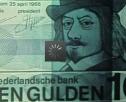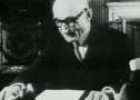History of the Single Currency
On February 7, 1992, the leaders of the then twelve members of the EU agreed on an ambitious document that heralded a number of major achievements, above all the creation of a single currency, the euro. Fifteen years ago this month a treaty was signed in the Dutch city of Maastricht that sowed the seeds of what has become a major part of everyday life for 316m people across the EU: a common currency, the euro. Although not introduced until 2002, the euro owes its existence to the economic and monetary union (EMU) between members of the EU, which came out of the Maastricht treaty. Officially called the treaty on European Union, Maastricht heralded freer movement of capital, common economic policies between countries and, in 1998, the European Central Bank (ECB), which oversees the euro. European commissioner for economic and monetary affairs Joaquin Almunia sums up the benefits: "The euro is the most powerful symbol of European integration. The euro has protected us from external shocks and given Europe a stronger role globally."
-
Idioma:
- Inglés
Recurso educativo
Cursos y asignaturas
-
14 años:
- Geografía
-
15 años:
- Lengua extranjera
- Geografía
- Historia
-
16 años:
- Lengua extranjera
- Historia
Competencias
-
Aún no hay comentarios, ¡comparte tu opinión! Inicia sesión o Únete a Tiching para poder comentar











¿Dónde quieres compartirlo?
¿Quieres copiar el enlace?